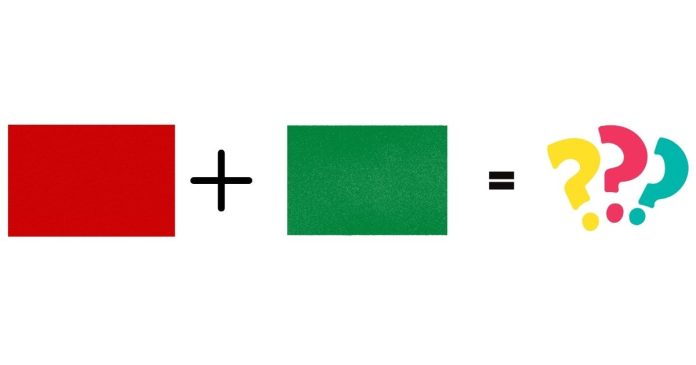Color mixing is a fascinating process that can yield surprising results, depending on whether you’re working with light or pigment. While many of us have experimented with mixing paints or noticed how colors blend on a screen, the outcome can vary dramatically based on the medium. Let’s dive into what happens when red and green are mixed, exploring both the science of additive and subtractive color mixing.
Additive Color Mixing (Light)
In the context of light, colors are mixed additively. This process involves combining different wavelengths of light to create new colors. Additive color mixing is used in devices like TVs, computer screens, and stage lighting.
When red and green light are combined, the result is yellow light. Why? Because red and green are two of the primary colors of light in the RGB (Red, Green, Blue) color model. When these two wavelengths overlap, they stimulate our eyes in a way that we perceive as yellow.
Here’s a simple explanation:
- Red light has a longer wavelength.
- Green light falls in the middle of the visible spectrum.
- Together, they create a color that lies between them—yellow!
This principle is why you see yellow when adjusting the brightness or hue on screens.
Subtractive Color Mixing (Paints and Pigments)
If you’re mixing red and green pigments, the story changes. Subtractive color mixing is the process used with paints, inks, and dyes, where colors are absorbed (subtracted) from white light.
When you mix red and green paint, the result is typically a brownish or muddy color. This happens because pigments work by absorbing certain wavelengths of light and reflecting others.
- Red paint reflects red light and absorbs other wavelengths.
- Green paint reflects green light and absorbs the rest.
- When you mix them, most of the light is absorbed, leaving a dull brownish color.
The exact shade depends on the specific hues of red and green used, as well as their relative proportions.
Why Does It Matter?
Understanding how colors mix is essential in various fields, including art, design, printing, and lighting. Knowing whether you’re working with light (additive mixing) or pigments (subtractive mixing) helps you predict and control the outcome.
For instance, an artist blending paints would expect earthy tones when mixing red and green. A graphic designer creating digital art, however, would anticipate yellow when combining these colors on-screen.
So, what color do we get when we mix red and green?
- With light, red and green create yellow through additive color mixing.
- With pigments, red and green produce a brownish color through subtractive color mixing.
The medium makes all the difference, showcasing the beautiful complexity of color science. Whether you’re painting a masterpiece or designing a digital display, knowing the principles of color mixing can elevate your creative endeavors.
What’s your experience with mixing colors? Have you encountered any surprising results? Share your thoughts in the comments below!



